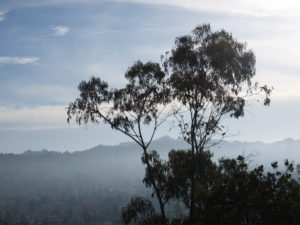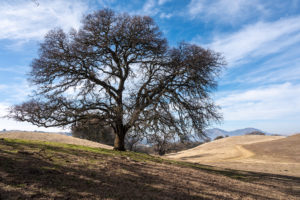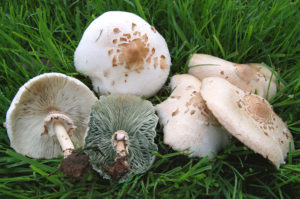About one-eighth of California’s land area is covered in oak woodlands. That adds up to 13 million acres of diverse habitat, ranging from hot, dry blue oak savanna to foggy, dense stands of coast live oaks.
Despite that vast acreage, it’s hard to be an oak in California. Threats to oak survival include the effects of fire management, increased pressure from booming rodent and deer populations, disease, drought, competition from exotic plants, and the largest threat of all, development.
In its Oaks 2040 report, the California Oak Foundation projects that 1 million acres of oak woodland will succumb to development over the next 30 years and 750,000 more acres will be threatened. That’s on top of 1 million acres of oak woodland already lost to development since 1950. Blue oak woodlands east of the Coast Range are particularly at risk in the face of accelerating suburban conversion of Central Valley and Sierra foothill ranch land.
Doug McCreary, who heads the UC Cooperative Extension’s Integrated Hardwood Range Management Program, explains that the problem is more complicated than the number of oaks lost. Oaks are wind pollinated, and their “pollen doesn’t travel all that far,” says McCreary. So even trees left standing, if they are in fragmented habitat, may not be able to reproduce.
In recent years California’s oaks have won some legal protection. The Oak Woodlands Conservation Act of 2000 provides funding to buy conservation easements in oak woodland areas, and a 2004 law requires that proposals to develop oak woodland include mitigation under the California Environmental Quality Act (CEQA).
Janet Cobb, who directs the Oak Foundation, says that while there are now laws on the books that require mitigation, little enforcement actually occurs. “CEQA never stopped a project. It gives consideration but little else,” Cobb says. “They’re still bulldozing.”
There’s some hope, says Cobb, that California’s new climate change legislation might add legal weight to oak woodlands’ role as a carbon sink. Young oaks don’t begin to sequester carbon significantly until they are at least 20 years old, and even older for blue oaks. That means mature intact stands of oaks can’t simply be replaced by new plantings elsewhere, so we can add mitigating climate change to the already lengthy list of reasons to preserve our state’s oak woodlands.

.jpg)



